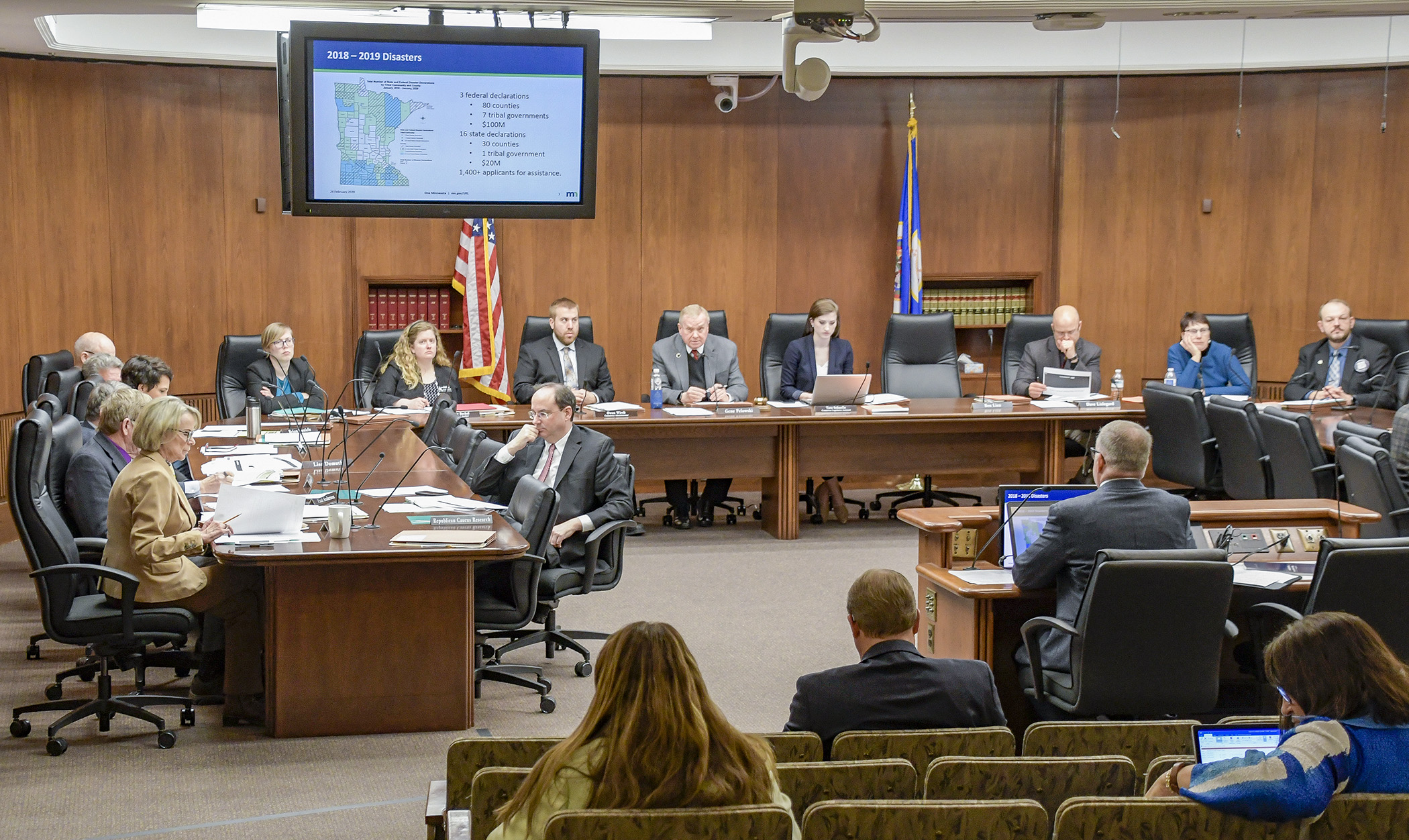Division OKs $30 million to replenish the state’s disaster contingency account

The past two years have been exceptionally active for natural disasters across the state, and state officials anticipate the trend will continue in 2020.
“Right now the odds are stacked against us in that we’re probably going to see significant spring flooding,” Joe Kelly, the Department of Public Safety’s director of homeland security and emergency management, told the House Greater Minnesota Jobs and Economic Development Finance Division Monday.
Between 2018 and 2019 the state received three federal disaster declarations and had 16 gubernatorial disaster declarations. There were 1,400 applications for disaster relief assistance from cities, townships, counties and tribal governments, according to information from the Public Safety Department.
All of this activity has led to a projected deficit in the state’s disaster contingency account.
Sponsored by Rep. Gene Pelowski, Jr. (DFL-Winona), HF3633, would transfer $30 million in Fiscal Year 2020 from the General Fund to the Disaster Assistance Contingency Account.
The bill was approved by the division and now heads to the House Ways and Means Committee. The companion, SF3564 awaits action by the Senate Judiciary and Public Safety Finance and Policy Committee. Senate President Jeremy Miller (R-Winona) is the sponsor.
The account was created in 2014 to provide immediate disaster response funding without further legislative action. Prior to its creation, the Legislature would need to convene every time a disaster was declared, often in a special session, to appropriate money toward response efforts. The process proved to be inefficient and delayed help to affected communities.
Since its creation, the account has been funded each biennium. In addition to providing funds for uninsured damage to public infrastructure and response costs, it pays the nonfederal share of presidential declarations (25%), and funds the state share of gubernatorial declarations (75%).
“The account has worked exactly the way the Legislature intended it since its creation and the governor has not had to call the Legislature into special session to provide disaster relief,” Kelly said.
However, the breadth of the 2018 and 2019 weather events has increased demand for the funds. Earlier this month, Public Safety Commissioner John Harrington sent a memo to House and Senate leaders informing them the account would soon be exhausted and inadequate to meet existing projected requirements.
To date, the Legislature has appropriated $82 million into the account, $72 million has been distributed. Although there is currently $6 million in the account, FEMA recently projected a $9 million increase in the state’s cost share for a 2019 spring flood, creating a $3 million deficiency.
The bill, which reflects Gov. Tim Walz’ recommendation, would cover the projected $3 million deficit, provide $20 million for anticipated spring 2020 disaster expenses, and provide $7 million for disaster assistance for the remainder of the 2020-21 biennium.
Rep. Paul Anderson (R-Starbuck), while supportive of the bill, asked if lawmakers should also be considering additional funds in the event of major natural disasters.
Pelowski shared appreciation for Anderson’s support of the bill, and the account, and said there’s discussion underway to determine the best approach for funding the account going forward.
“We’re in discussion with leadership right now as to how much should we put into this fund and whether or not there should be a permanent appropriation attached to it, not a contingency appropriation,” Pelowski said.
Related Articles
Search Session Daily
Advanced Search OptionsPriority Dailies
Ways and Means Committee OKs proposed $512 million supplemental budget on party-line vote
By Mike Cook Meeting more needs or fiscal irresponsibility is one way to sum up the differences among the two parties on a supplemental spending package a year after a $72 billion state budg...
Meeting more needs or fiscal irresponsibility is one way to sum up the differences among the two parties on a supplemental spending package a year after a $72 billion state budg...
Minnesota’s projected budget surplus balloons to $3.7 billion, but fiscal pressure still looms
By Rob Hubbard Just as Minnesota has experienced a warmer winter than usual, so has the state’s budget outlook warmed over the past few months.
On Thursday, Minnesota Management and Budget...
Just as Minnesota has experienced a warmer winter than usual, so has the state’s budget outlook warmed over the past few months.
On Thursday, Minnesota Management and Budget...